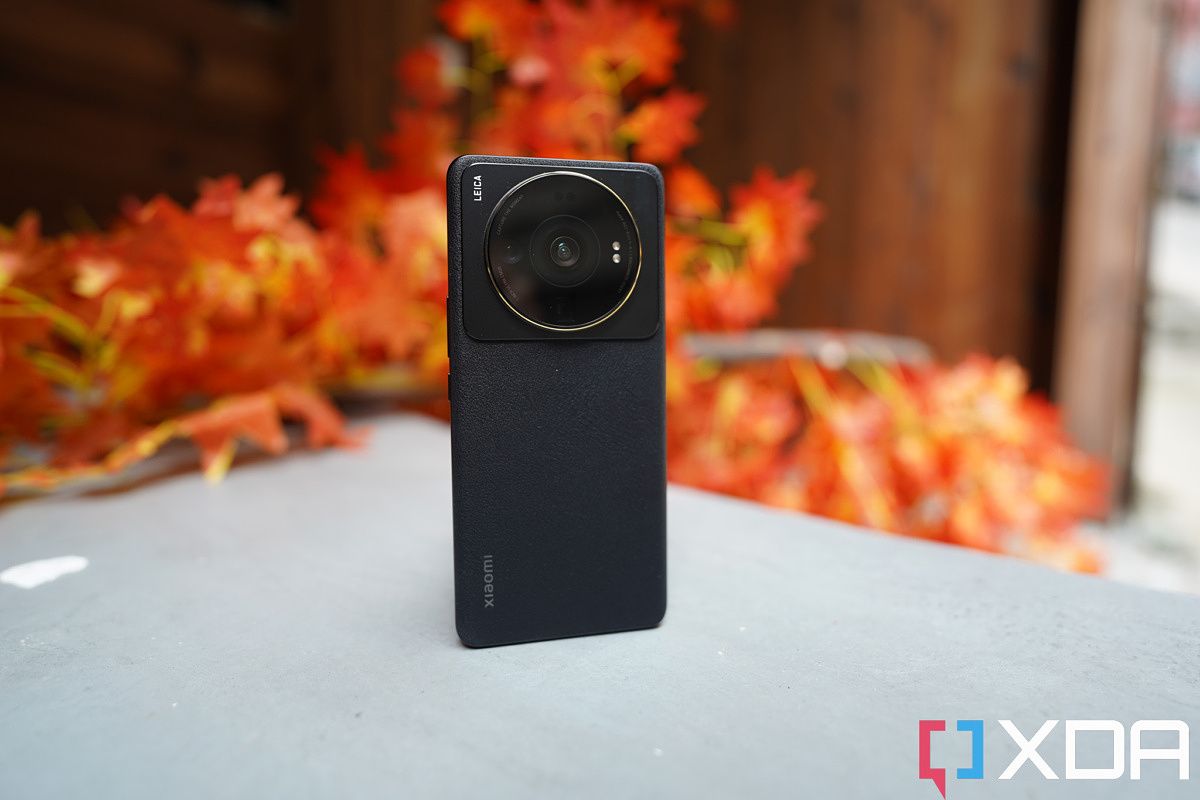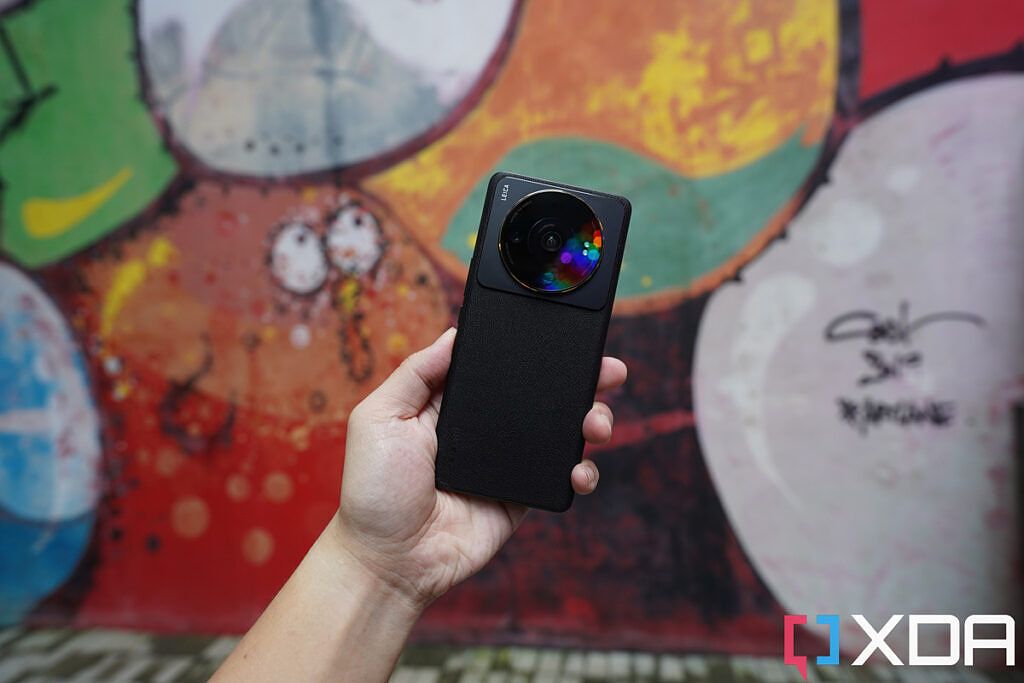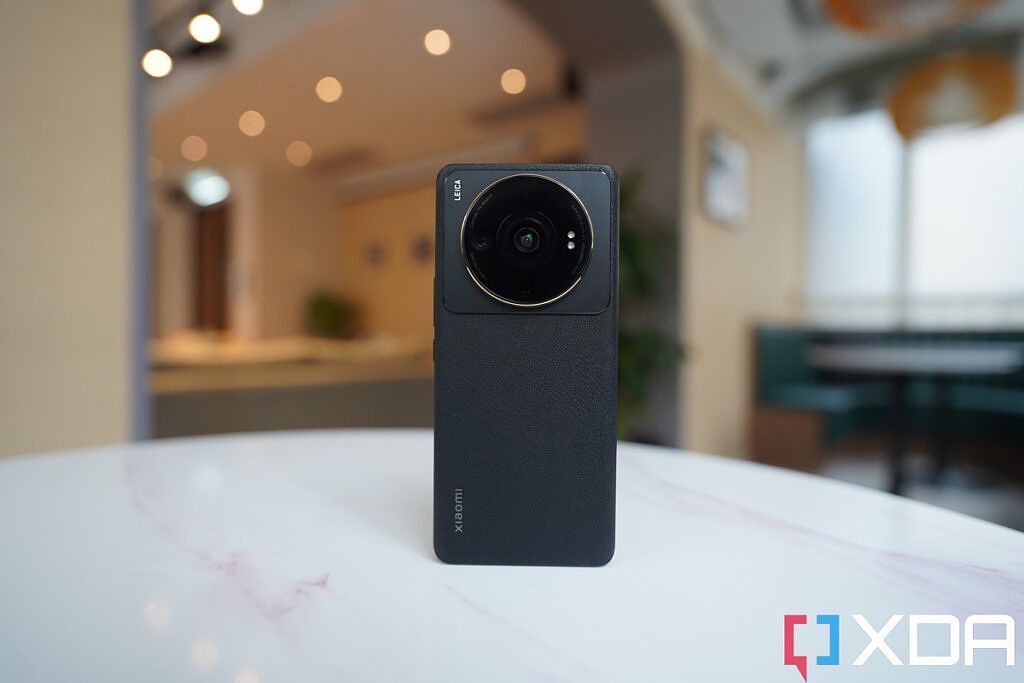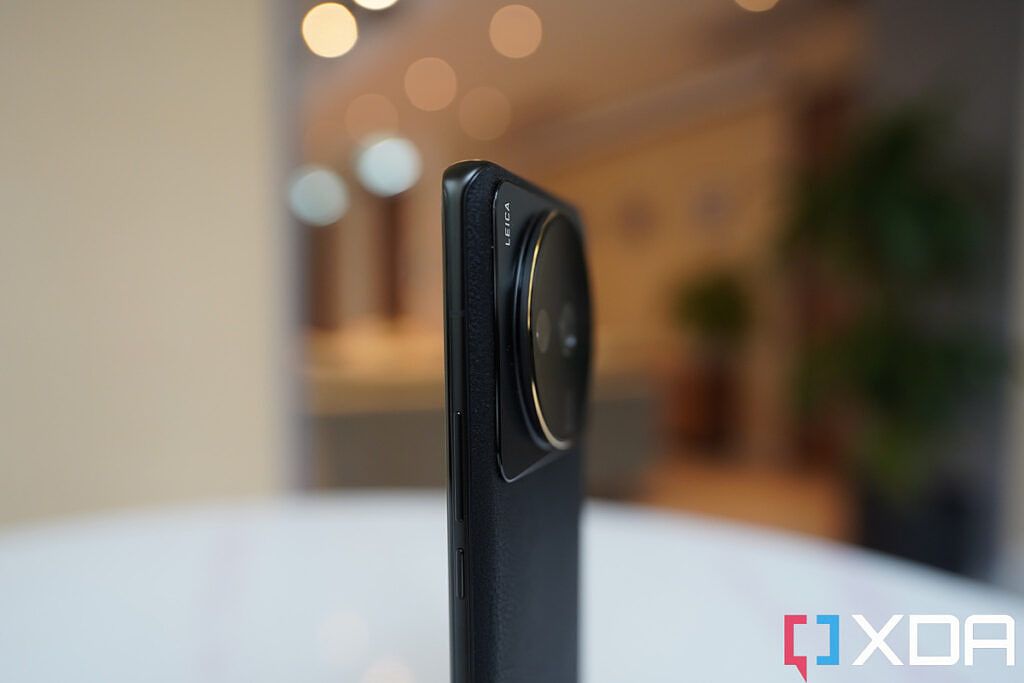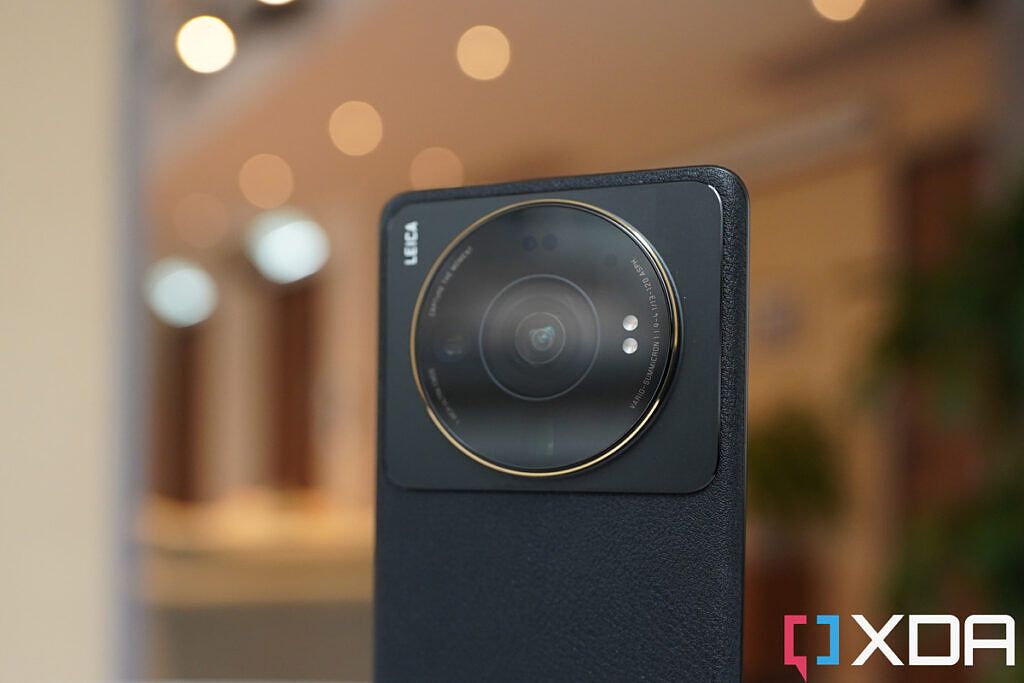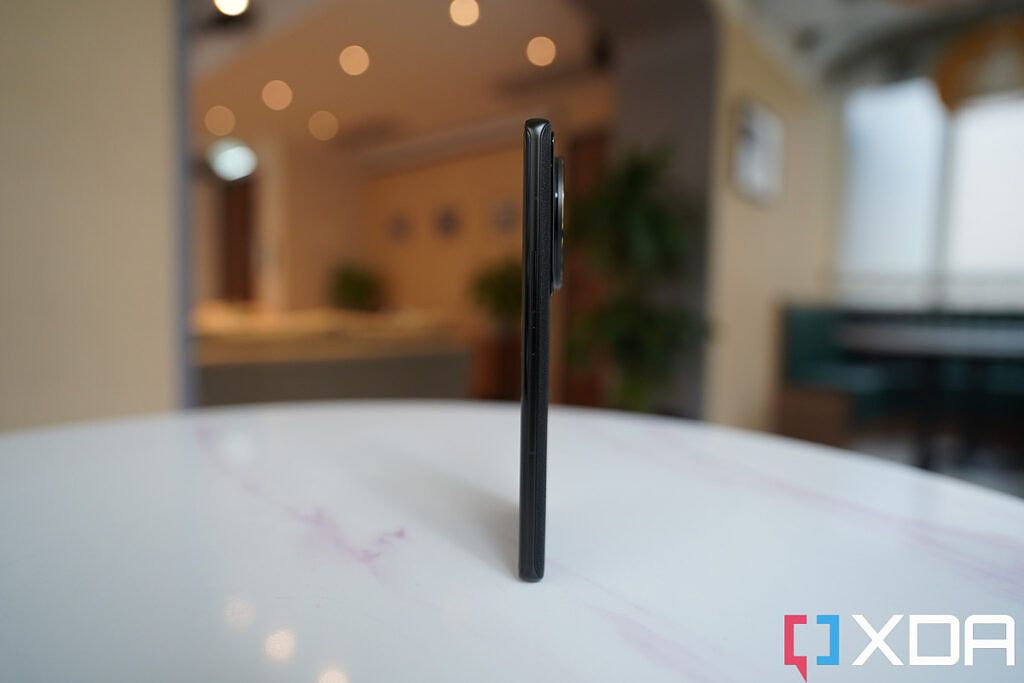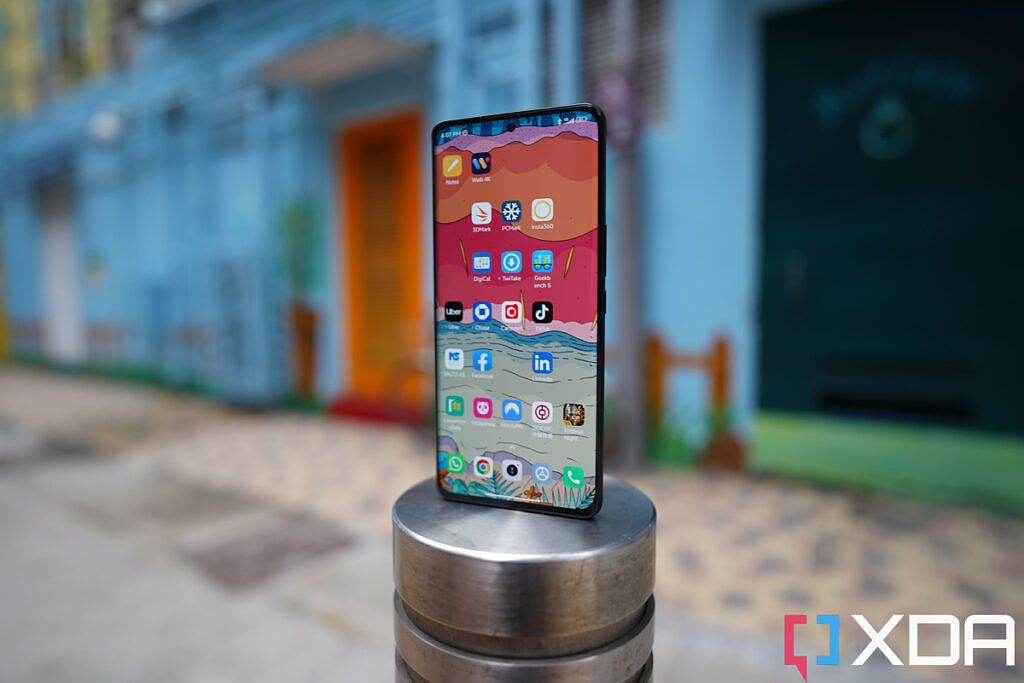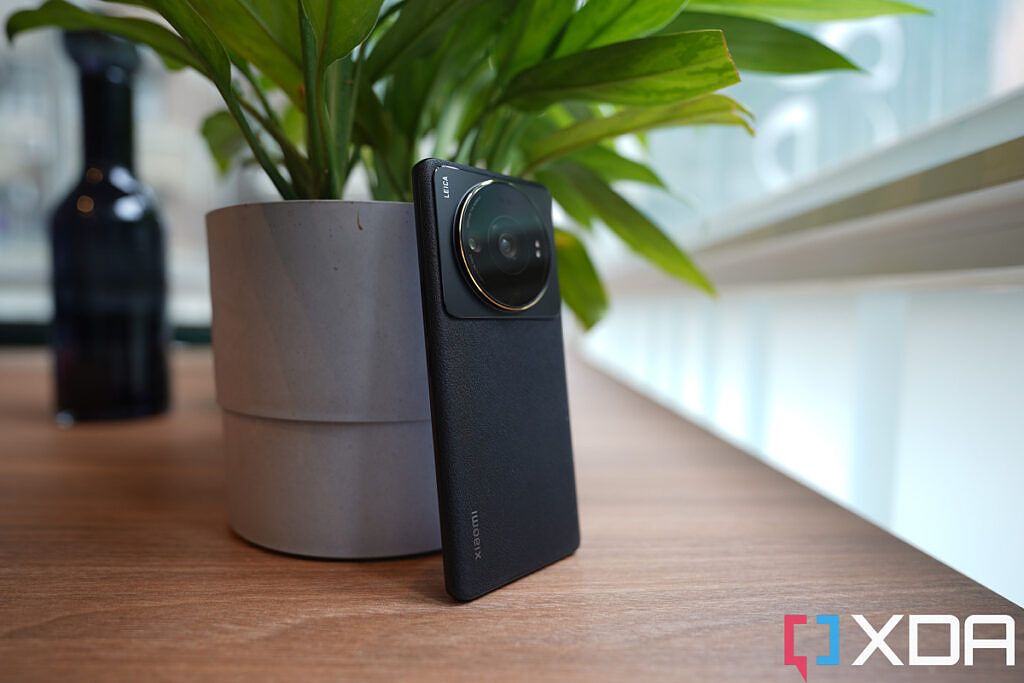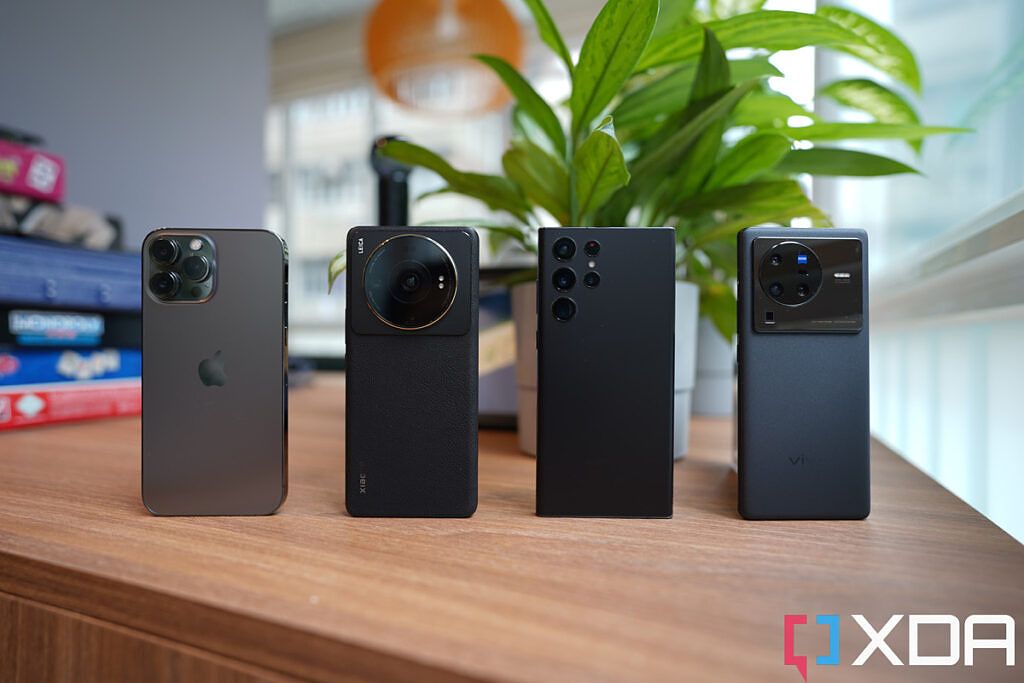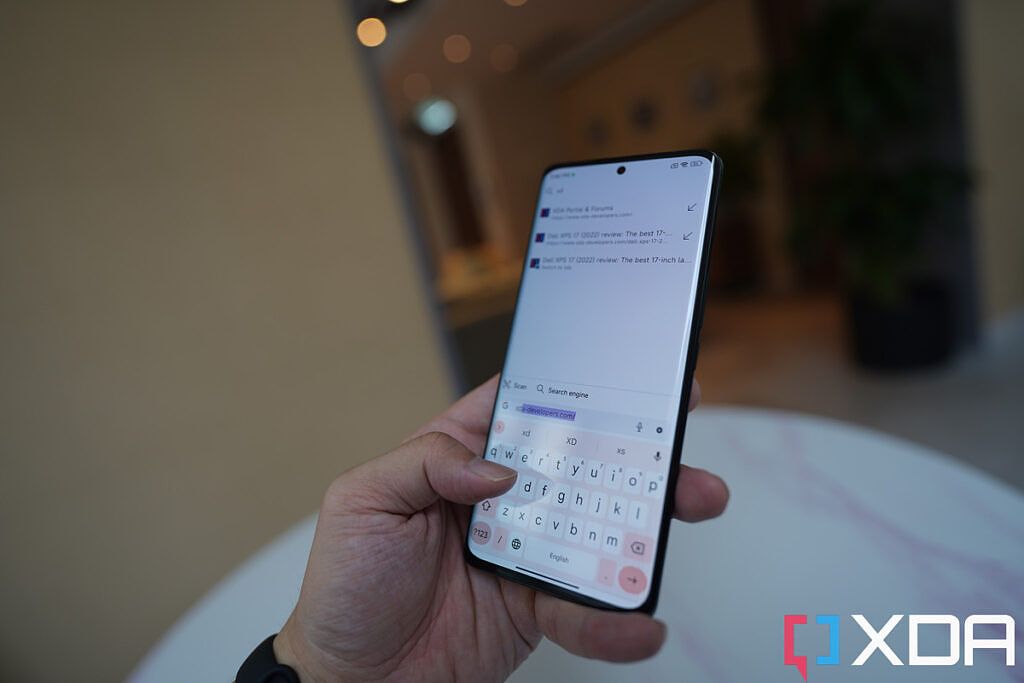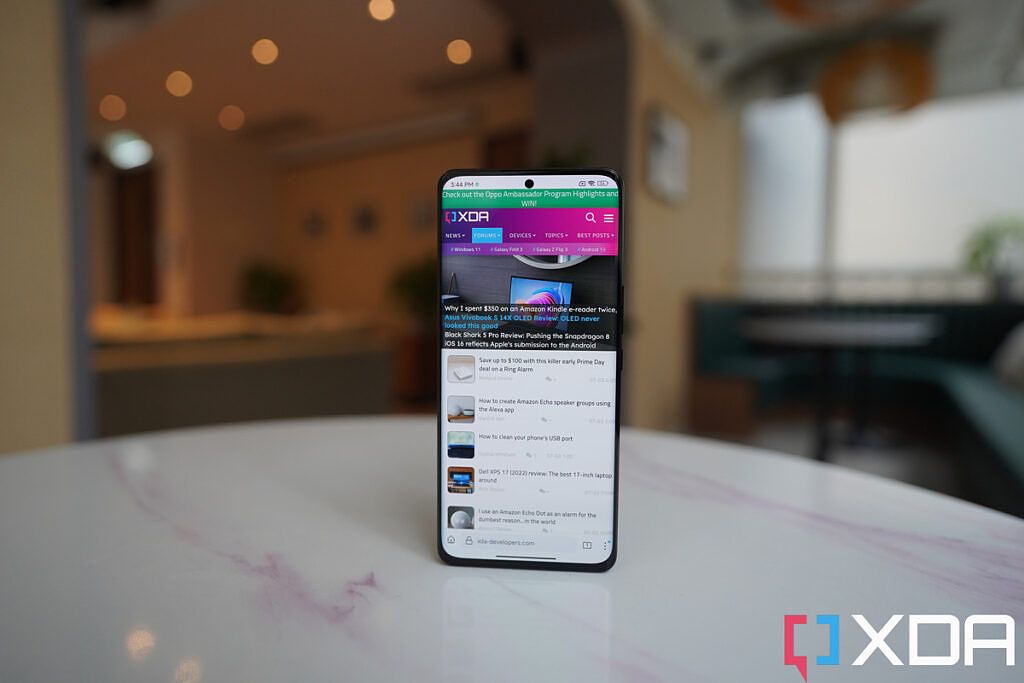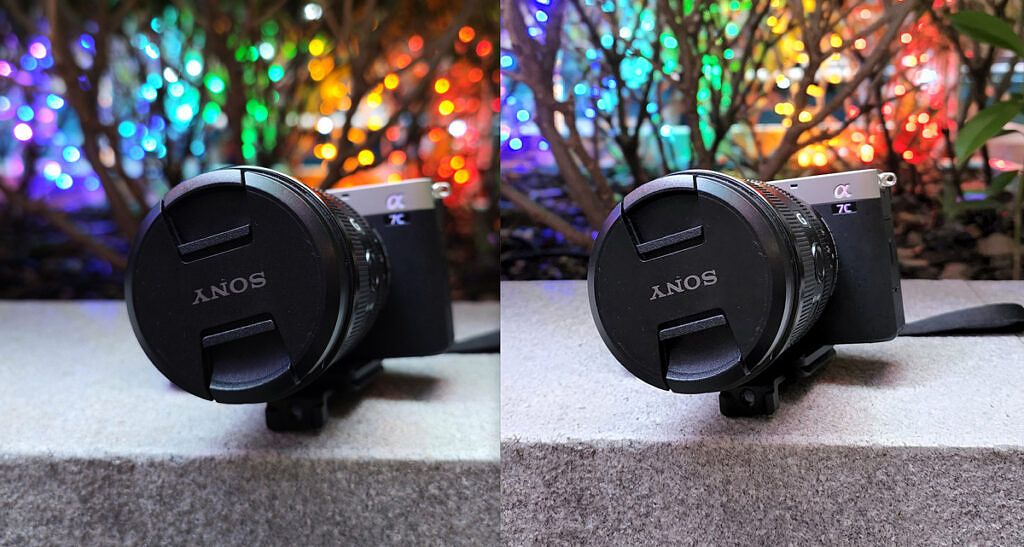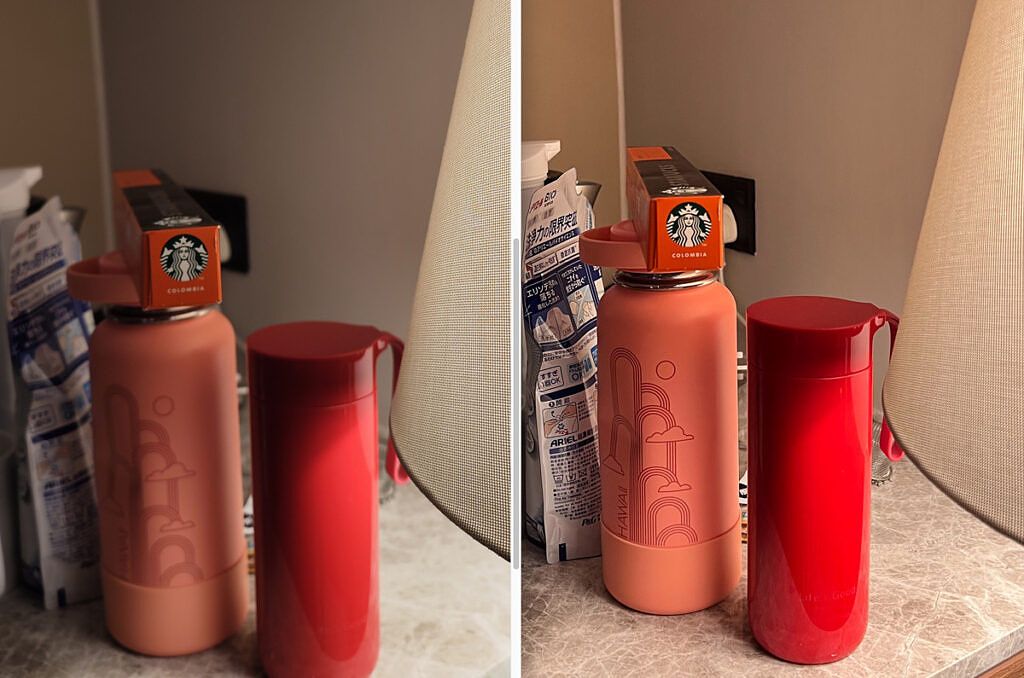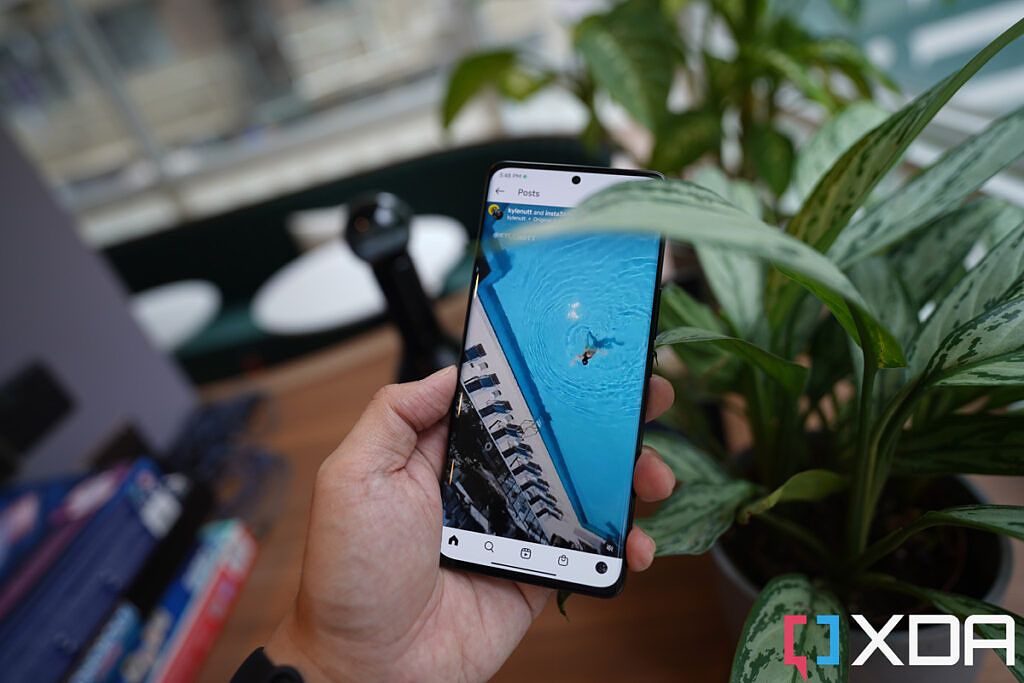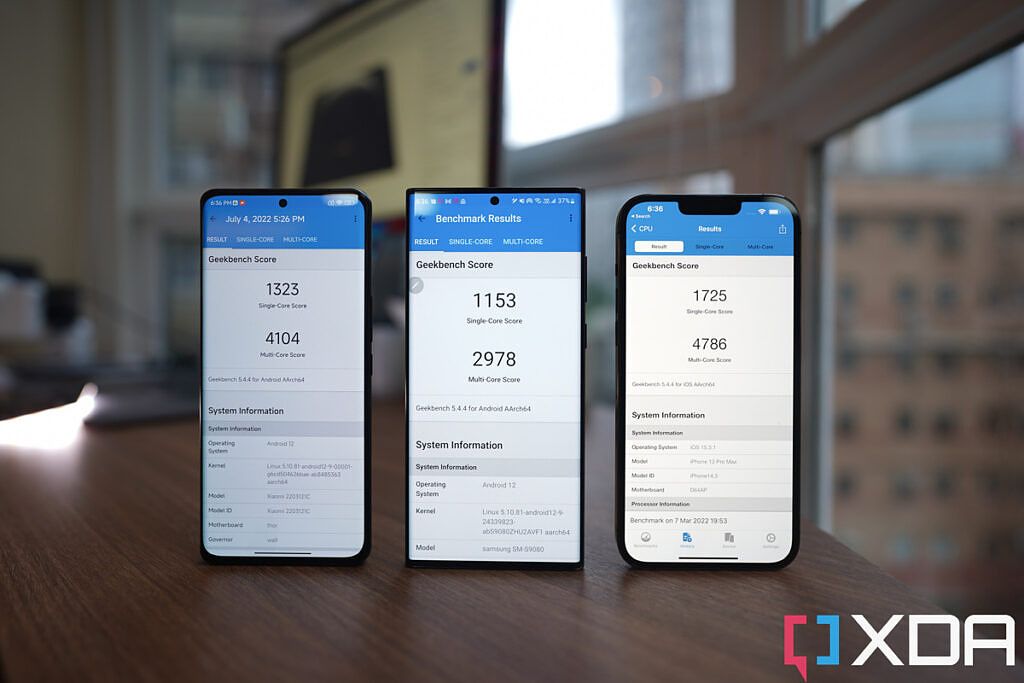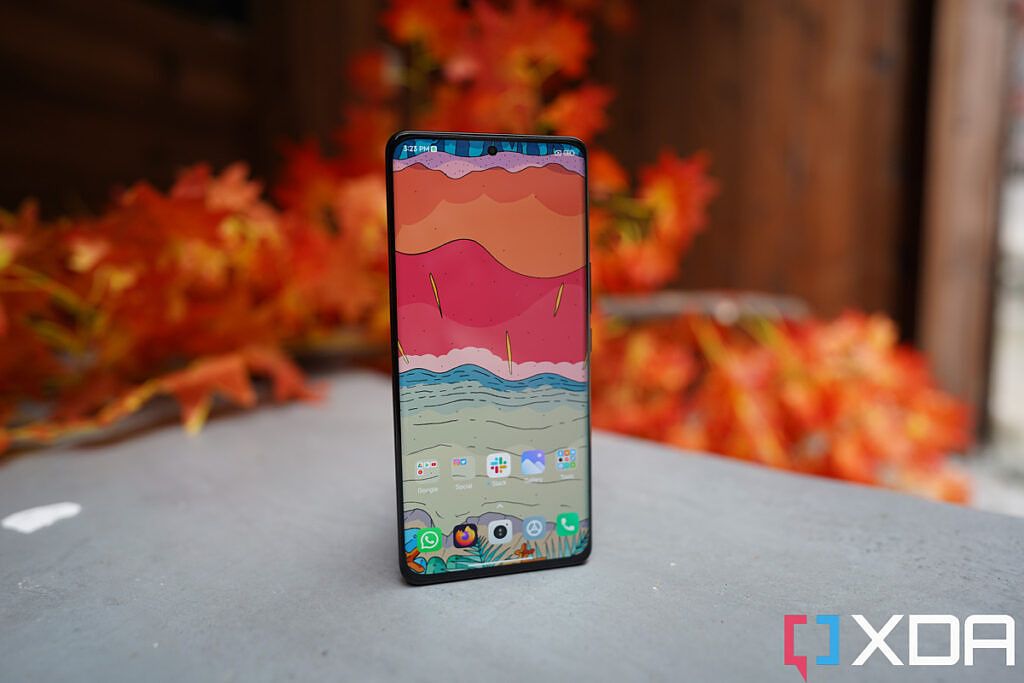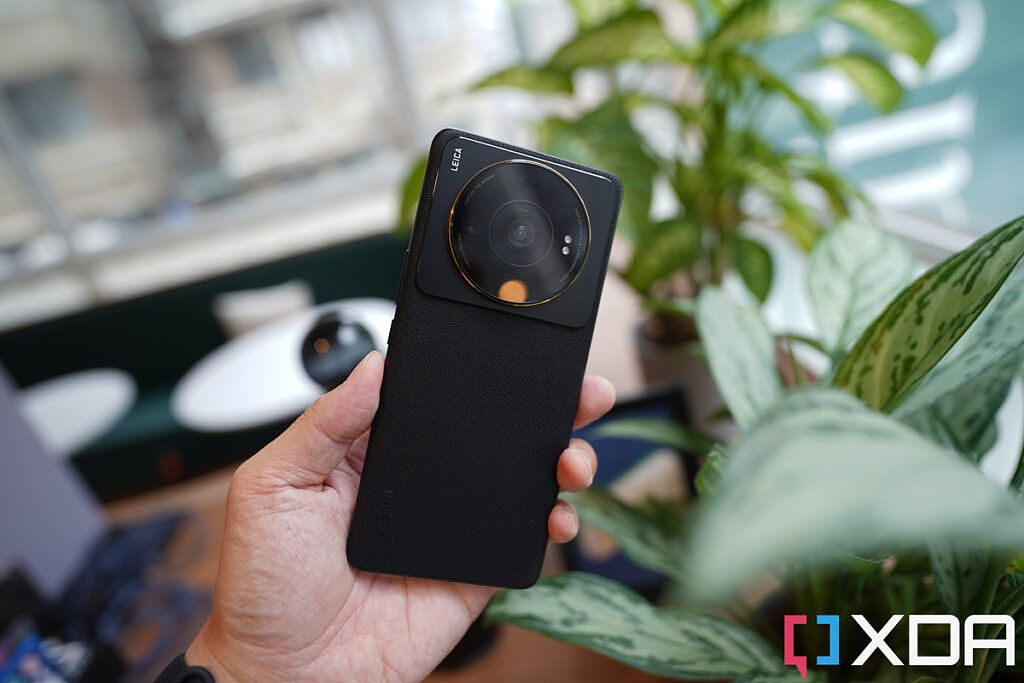Quick Links
For far too long, Xiaomi has been seen as a brand that made some pretty good, but not great, phones. The draw was that Xiaomi always priced its devices lower than what Huawei or Samsung charged, thus making them appealing for their value-for-money quotient. Xiaomi has done a remarkable job shedding that reputation in the last two years, as it is now seen as a brand that, while still offering great value mid-rangers such as the Xiaomi 12 Lite, is also capable of making absolutely premium flagship phones that can trade blows with, and even beat, the Apples and Samsungs of the world. Anybody who's used last year's Xiaomi Mi 11 Ultra won't argue this, and the Xiaomi 12S Ultra continues this hot streak. In a year of mostly iterative smartphone updates so far, the Xiaomi 12S Ultra is a noticeable step up in some very important smartphone areas.
Xiaomi 12S Ultra: Pricing and Availability
The Xiaomi 12S Ultra is on sale now, but only in China. Those who are really interested can look into importing options, or wait and see if Xiaomi releases this globally. From what we know so far from our external sources, Xiaomi isn't planning for an international launch. Considering the last Xiaomi Ultra device saw a global release, and this is the company's first Leica co-branded device, we hope to be incorrect in this matter and pray that there will be an international launch later.
In China, the Xiaomi 12S Ultra is priced at:
- 5,999 yuan (around $892) for 8GB RAM + 256GB storage
- 6,499 yuan (around $969) for 12GB RAM + 256GB storage
- 6,999 yuan (around $1,045) for 12GB RAM + 512GB storage
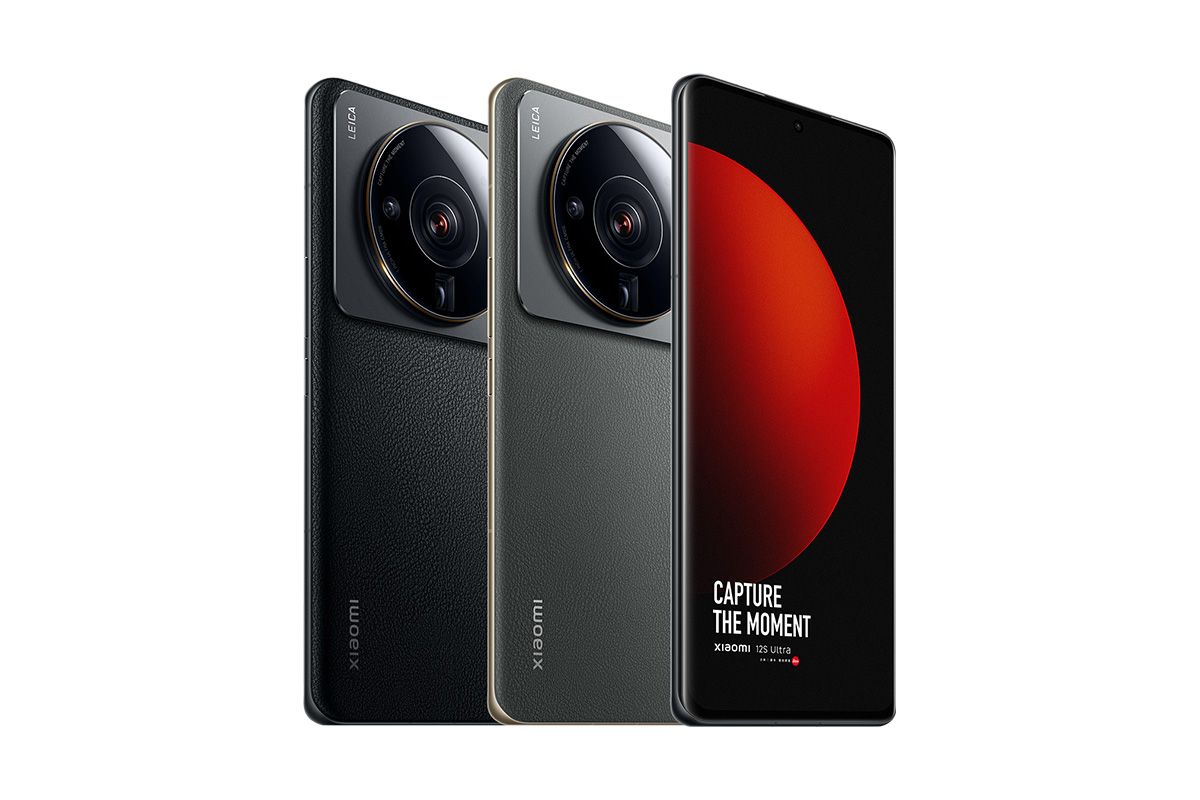
Xiaomi 12S Ultra
The Xiaomi 12S Ultra is Xiaomi's best slab offering of the year, and it brings brand new camera with a 1-inch sensor and Leica optics.
Xiaomi 12S Ultra: Specifications
|
Specification |
Xiaomi 12S Ultra |
|---|---|
|
Build |
|
|
Dimensions & Weight |
|
|
Display |
|
|
SoC |
Qualcomm Snapdragon 8 Plus Gen 1 |
|
RAM & Storage |
|
|
Battery & Charging |
|
|
Security |
In-display fingerprint scanner |
|
Rear Camera(s) |
|
|
Front Camera(s) |
32MP RGBW image sensor |
|
Port(s) |
USB Type-C |
|
Audio |
|
|
Connectivity |
|
|
Software |
MIUI 13 based on Android 12 |
|
Other Features |
|
About this review: Xiaomi provided me with a Xiaomi 12S Ultra to test. This review was written after nine days of testing the phone. Xiaomi did not have input in this review.
Xiaomi 12S Ultra: Design and Hardware
- Main camera uses a new 1-inch sensor developed by Sony, with optics from Leica
- Premium materials, construction, and finish
- One of the first phones to ship with Qualcomm Snapdragon 8 Plus Gen 1
Smartphone camera modules have gotten larger and larger through the years, but the Xiaomi 12S Ultra really takes the cake. I mean, look at this thing. It protrudes quite a bit from the backside too, so if you're placing this phone flat on a table, it lays at an incline as if you're propping up a keyboard.
As if this camera module isn't eye-grabbing enough, there's also a 24k gold ring that wraps around the module. But yet, despite the top-heavy design, the phone can still stand on its own, thanks to its flat bottom and top.
This, however, means the Xiaomi 12S Ultra's screen loses that quad-curved design seen in the Xiaomi Mi 10 Ultra and Mi 11 Ultra (there's no Mi branding for this year's phone, by the way).
The Xiaomi 12S Ultra has a shape that's pretty typical of modern Android flagships: the 6.7-inch screen is curved on the left and right sides, with rounded corners and minimal bezels. It's a Samsung E5 LTPO panel, which is about as good as mobile display tech gets right now.
The Xiaomi 12S Ultra screen is as good as mobile display tech gets right now
It's razor-sharp (3200 x 1440), can vary its refresh rate from 1-120Hz, and supports 100% of DCI-P3 color gamut, 10-bit colors, HDR 10+, etc. With a peak brightness of 1,500 nits, this 12S Ultra screen even gets virtually as bright as the Galaxy S22 Ultra's display, which was previously leading the industry by a distance.
The chassis is crafted out of aluminum: volume rocker and power button on the right side, and symmetrical speaker grills on top and bottom. They're also tuned by Harmon/Kardon. The back side is covered by this grippy faux leather that resembles the handle area of a camera body, with a giant camera module on top.
The Xiaomi 12S Ultra is a bit heftier than most 2022 flagships at 225g and 9.06mm thick, but not so much that it feels bulky.
Internals
The phone packs a 4,860 mAh battery, 12GB of LPDDR5 RAM, and UFS 3.1 storage up to 512GB -- pretty standard stuff for a flagship. What's new and noteworthy is the trio of silicon inside: Qualcomm Snapdragon 8 Plus Gen 1 SoC, along with Xiaomi's self-made Surge G1 and P1. The Snapdragon 8 Plus Gen 1 should be familiar to readers, it's Qualcomm's newest update on its flagship chip, and the Xiaomi 12S Ultra is one of the first phones to ship with this chip. It's a very valid upgrade over the Snapdragon 8 Gen 1, and everyone who has the choice to take the Plus over the standard should take it, which is something we couldn't particularly say for previous Plus chips from Qualcomm.
The Surge G1 and P1, meanwhile, are dedicated chips designed by Xiaomi to handle battery management and charging. I am no battery expert, I'm not really sure if you really need a dedicated silicon to handle each task like this, but I can say the Xiaomi 12S Ultra has the best battery life of any Android flagship with a 120Hz, WQHD+ screen I've tested. This is a phone that can consistently go an entire 13-hour day out for me, and I'm a very heavy user. I'll elaborate on battery life in the performance section further down.
Every part of this phone, from processor to screen, haptics to optics, is top-notch. The only nitpick I have is the in-display fingerprint scanner -- it's "just" a typical optical in-display scanner (likely sourced from Shenzhen-based Goodix) and not the Qualcomm 3D Sonic Max ultrasonic scanner that Vivo has been using in its flagships. The latter is just noticeably faster with a larger scanning area. After using that scanner on the Vivo X80 Pro and Iqoo 9 Pro, it's just hard for me to go back to the smaller, slower optical scanner. I am aware this is a total nitpick that applies only to reviewers or phone enthusiasts in Asia, because the rest of the world doesn't even have access to a device with the new 3D Sonic Max scanner yet.
Xiaomi 12S Ultra: Cameras
- The 50MP, 1-inch sensor with Leica optics is legitimately great, producing shots with more natural bokeh
- The 48MP ultra-wide and 48MP 5X Periscope cameras are very good, but not necessarily better than rival offerings
- Selfie camera and portraits can be hit or miss
The Xiaomi 12S Ultra packs four cameras -- three on the back, one around the front -- but clearly, all the attention and interest is on the main camera: a 50MP (actually 50.3MP) shooter using Sony's new IMX989 1-inch sensor. Xiaomi says it contributed 15 million in funding to Sony to help develop this sensor, but this lens isn't exclusive to Xiaomi -- other phones including the just-launched Sharp Aquos R7 also use this sensor.
But that's not all with this main camera in terms of gaudy numbers and big brand namedrops. This main camera also uses Leica optics, a new 8P lens that Xiaomi says was developed just for this phone. There's a lot to cover with this camera, so I'll separate my findings into sections. Photos in this article have been compressed, so those who want to view full-resolution photo samples can check out the Flickr album below.
1-inch sensor means stronger and more natural bokeh
So what does a larger sensor do? A larger image sensor takes in more light, resulting in greater dynamic range and image details. It also produces a shallower focus pane for that depth-of-field bokeh effect professional photographers love.
Every phone nowadays will produce some form of bokeh if you snap a shot of something/someone close enough, but the Xiaomi 12S Ultra's bokeh is consistently stronger, with a more natural focus drop-off. In the below sample set, even if you're viewing the images on a phone screen, you'd be able to see the Xiaomi image exhibits significantly stronger bokeh.
But if you look closer, ideally on a larger screen, you can see that the Xiaomi image not only is exhibiting bokeh between the camera and the plant behind but also between the camera lens and the camera body. The larger sensor is able to produce some separation between the two, because the lens is a good five inches closer to the camera than the camera body. Samsung's image provides some separation between the camera and plant, but not quite the lens and body. It's a flatter image.
Since the iPhone 13 Pro Max has a smaller image sensor size than the Galaxy S22 Ultra, the difference in depth-of-field is even more jarring when pitted against the Xiaomi 12S Ultra. Pay attention to the second set, in particular, Xiaomi's image not only showed separation between the foreground (the lamp) and background (bottles), but also the Starbucks box and the pink bottle under it, because the box protruded a few inches out towards the camera.
The iPhone's image just looks flat by comparison.
Leica color science really likes contrast
You may have noticed from the samples so far that Xiaomi's images are showing deeper shadows and have more contrast than shots captured by the Galaxy S22 Ultra or iPhone 13 Pro, this is part of that Leica-inspired color science, which deliberately keeps shadows darker for a more striking contrast.
The first time you start the camera app, the phone will actually ask you to choose between two Leica color profiles: "Leica Authentic" and "Leica Vibrant". Both profiles still keep shadows pretty dark, but the Vibrant will exaggerate highlights a bit. I generally prefer the Authentic color profile better.
I'm glad the Xiaomi 12S Ultra camera is confident and has its own identity, instead of pushing out semi-generic, flat images. For contrasty scenes (like a sunny day over a city with lots of tall buildings), the camera can produce some very atmospheric shots. The Leica watermark you see in some of the samples is optional and turned off by default.
For reference, here's how the Google Pixel 6 Pro handled this particular high-contrast scene. It comes down to a matter of preference which shot is "better."
A larger sensor also means it doesn't need night mode as often
Larger sensors collect more light than smaller sensors, and since the Xiaomi 12S Ultra has a larger sensor than any mainstream flagship, it should automatically be the low-light photo king, right? It's not so straightforward. Image sensor size is just one of many methods that allow a smartphone camera to gather light information to produce an image. There's also the aperture size, and lots of software tricks such as pixel binning and "night mode," the latter uses computational image stacking to recreate the long exposure shot experience of a real camera.
Because night modes have gotten so, so good, and most phones turn it on automatically, I find that, for most low light scenes, the Xiaomi 12S Ultra image often appears not as bright as rival phones.
This is partly because the 12S Ultra's color science likes to keep shadows darker, but the bigger reason is that the 12S Ultra did not use night mode for the above shot, while the other three phones did (they turned on automatically). You really need to shoot in pitch black conditions just to trigger night mode, whereas something like a Pixel 6 Pro or iPhone 13 Pro will turn on night mode as soon as the sun sets. The iPhone needed a two-second night mode to grab the above shot, while the 12S Ultra just snapped it as normal.
In this next set, the scene was dark enough that Xiaomi finally turned on a one-second night mode, compared to the other two phones' two-second night mode.
I suggest readers who care about these things jump into the Flickr album with full-size samples to pixel peep. But from my examination, the iPhone's shot is extremely noisy when viewed in full size, and the lights are too blown out in the playground area. I actually prefer Samsung's colors the best of the three.
So we can see that the Xiaomi 12S Ultra's night shots aren't going to be magically brighter and better lit than rivals because the others will simply resort to night mode. But night mode isn't always ideal, because you have to keep still for seconds (the Pixel 6 Pro is particularly ridiculous, sometimes taking five full seconds to snap a night shot), so you won't be able to use night mode to shoot moving subjects. Xiaomi's shots are a bit more organic as a result, because it's often just a straightforward shot, and it's almost always less noisy if you pixel peep. In the below set, taken in an entirely black room with the light source coming from the window and monitors, you can see Xiaomi's image exhibits the least noise. However, Vivo's absolutely uncanny HDR is still jaw-dropping, managing to expose the monitor, window, and rest of the room properly while Xiaomi and Samsung blow out the computer screens.
Here are more night samples from the Xiaomi 12S Ultra, I really like the camera for night shots, even if the Vivo X80 Pro is still arguably the low light photo champion.
Leica portrait filter quality has a high ceiling, low floor
Because the Xiaomi 12S Ultra's sole zoom lens is such a long zoom (5X), the phone uses the main camera for portraits and digitally crops in for a more desirable focal length. By default, the camera shoots portraits at what appears to be 50mm-ish equivalent. But there are three Leica portrait styles (aka filters) that simulate shooting with different Leica lenses: 35mm black and white; 50mm swirly bokeh; and 90mm soft focus.
I really like the 35mm black and white filter and find most shots to be very visually appealing.
But the other two filters miss more often than they hit, producing unusable shots like below.
If we revert to just standard portraits, then the 12S Ultra's are okay, but edge detection is a bit too aggressive, and the iPhone's portrait mode is clearly smarter at identifying what should be in the foreground and background. In the second set below, you can see the Xiaomi artificial bokeh looked very wonky around the second lion statue in the back. The iPhone correctly identified the second lion as being further in the background and applied the artificial bokeh correctly. This is like a reverse of shooting normal photos, with the Xiaomi shots looking oddly flat while the iPhone shot has (simulated) depth.
Zoom and Ultra-wide cameras are very good, but not the best
The Xiaomi 12S Ultra brings back the same 48MP 5X Periscope and ultra-wide cameras as last year's Mi 11 Ultra. I notice the newer ISP and software processing has improved the 5X zoom from last year, and the ultra-wide for the most part grab shots that are more detailed and, in low light conditions, less noisy than the iPhone 13 Pro Max and Galaxy S22 Ultra ultra-wides.
But Xiaomi's cameras here are not the best in the industry. Samsung's Galaxy S22 Ultra's 10X zoom lens is better -- not only does it have twice the optical focal range, but the viewfinder remains remarkably stable even when I'm zooming in 20X, 30X.
The 12S Ultra's ultra-wide also has a noticeably different color science from the other two lenses.
Real bokeh makes videos look more professional
The Xiaomi 12S Ultra video performance is really good. It can shoot videos up to 8K resolution, but I don't care about that and neither should most people. Instead, shoot at 4K/30 and marvel at the crisp videos with good stabilization and best of all, noticeable bokeh because of that larger sensor. See the samples below.
The only nitpick I have with the video is that the audio recording is a bit below par compared to the Galaxy S22 Ultra. My voice is a bit more distant in Xiaomi's clips than in Samsung's. Although a major problem is also because I film videos outside, in one of the noisiest cities on earth. Most people in quieter regions will not have this issue.
The selfie camera is below par
There's a 32MP selfie camera, and it's a bit hit and miss. I really like the first shot, for example, with the strong contrast, and accurate portrayal of my skin tone and texture. But the other three, taken in lower light situations? The shutter speed is obviously much slower as there's a bit of blur in every shot, and my skin suddenly looks heavily softened, Samsung style. In the last shot, I look plastic.
When you factor in that the selfie camera can only shoot maximum of 1080p videos (not 4K), then it's safe to say this lens is below par by 2022 flagship standards.
Is the Xiaomi 12S Ultra the best camera phone?
I have been very vocal in calling the Vivo X70 Pro Plus/X80 Pro the best camera phones (the two cameras are very similar), so the only logical question for me to ask is if the Xiaomi 12S Ultra's main camera beats it. This sounds like a copout, but it really depends on your preference. Vivo's HDR is still the most uncanny, able to find the perfect balance in every shot. I've snapped over a thousand photos with the Vivo phones in the past 10 months and I have yet to see them blow out highlights. Take this below set: it's a difficult scene to shoot -- a very brightly lit food stall located in a dark street corner.
Vivo's HDR is just jaw-droppingly crazy here, in that it managed to expose everything perfectly, in the main and ultra-wide shot. The lights from the store are not too harsh, the store sign is clearly legible, and the street has shadows but it's not too dark. Xiaomi's shot by comparison blows out the store lights, and the shadows are dark. But Xiaomi's shot is more natural, and better represents the gritty vibe at the time. Vivo's shots look too over-processed.
Okay, the last set of samples. This is yet another tough scene, shooting out a window with very harsh sunlight blasting through. Notice, again, that Vivo's HDR is the best -- it's the only camera to not blow out the very harsh light coming through the window, and it also illuminated the shadow-drenched cabinet in its natural and boxes in their natural colors. Samsung's shot has a weird yellow cast over the cabinet. Xiaomi's shot chose to keep that part of the frame covered in shadows. And the Microsoft Surface Duo 2? I'm just including it here to give you guys context to what a bad smartphone camera would do here in this really tough scene.
The best way I can put this Xiaomi 12S Ultra vs Vivo X80 Pro camera battle is that Vivo still grabs the most jaw-dropping shots, but Xiaomi's camera feels more organic, and feels more like a real camera, and makes me want to experiment with shooting more. I am absolutely in love with the large 1-inch sensor, and all that natural bokeh that comes with it.
Xiaomi 12S Ultra: Software and Performance
- The phone runs MIUI 13.0.3 over Android 12
- Fast, zippy performance
- Really good battery life
MIUI
The Xiaomi 12S Ultra ships with MIUI 13.0.3 over Android 12. Since this phone is sold only in China for now, the software is the China ROM version of MIUI, which includes a lot of Chinese bloatware. Out of the box, there are over a dozen apps from Chinese companies like Baidu, Tencent, and games pre-installed. Fortunately, you can uninstall all of them. The software also doesn't ship with Google apps, but the Google Services framework is in this phone, so a simple installation of Google Play Store (available directly in Xiaomi's app store) immediately sets up Google on the phone.
For me, it took about 15 minutes of uninstalling all the bloatware apps and installing Google apps to get the phone to feel like a standard Xiaomi phone for international audiences. Xiaomi's China ROM cleans up a lot better than, say, ZTE's, meaning once I have set everything up, it really feels like a typical global ROM, without random Chinese fonts still left in bits of the UI, or unwanted Chinese notifications or search bars taking up space.
MIUI is an animation-heavy UI, but everything zips around very fast. Apps launch instantly, and I rarely saw any animation stutter or dropped frames the way I would in even Samsung's flagship phones.
I have long had problems with MIUI's settings page, which is overly complicated, and it's the same story here. There's not one, not two, but three display sections, meaning if you want to set resolution, or time before the screen sleeps, or navigation gestures, you go to three different settings pages.
I also am not a fan of Xiaomi splitting the notification panel and shortcut toggles, they're two separate panes, activated by a swipe from the middle or right side of the screen. In MIUI's international ROM, you can turn this off (and combine the two, like all Android phones), but the China ROM does not let you do this.
Snapdragon 8 Plus Gen 1
The Snapdragon 8 Plus Gen 1 is an "iterative" update on the Snapdragon 8 Gen 1, with Qualcomm promising a 10% improvement in CPU and GPU performance, but more importantly, a 30% improvement in energy efficiency. Benchmark numbers and real-world usage back up the improvement claims. In GeekBench, the Xiaomi 12S Ultra scores quite a bit higher than the Galaxy S22 Ultra.
Scores in PC Mark and 3D Mark's Wild Life Extreme Stress Tests are all higher than what the Snapdragon variant of Galaxy S22 Ultra scored too.
But really, Snapdragon 8 Gen 1 -- heck, even Snapdragon 888 -- is powerful enough to run any modern app without hiccups. The new chip makes zero difference in the things I do, like scrolling Instagram, sending emails, and typing in Slack. Even exporting short 20-second 4K videos feel about similar speed in the new chip.
Battery life and Charging
Instead, where I see a difference is the aforementioned superior battery life. I don't know how much of this is the new SoC being more efficient and how much is Xiaomi's Surge G1 chip, but I am consistently getting around 14 hours of use on a single charge, with a bit over six and half hours of screen-on time. I keep my display resolution and refresh rate at the highest possible, and I am a heavy camera guy who shoots and films a lot, and this can be considered good battery life.
No other phone with a 120Hz, WQHD+ screen gives me better battery life than the Xiaomi 12S Ultra
No other phone with a 120Hz, WQHD+ screen, not the Galaxy S22 Ultra, OnePlus 10 Pro, or Oppo Find X5 Pro, could give six and half hours of screen-on time. Just a year ago, I was lamenting that the combination of 120Hz and WQHD+ resolution was a battery killer, with the Xiaomi Mi 11 Ultra of last year not being able to last a full day for me despite having a larger battery than this year's phone. The only current mainstream flagship phone that I'm confident gives me better battery life is the iPhone 13 Pro Max -- and that phone doesn't have a WQHD+ display.
The Xiaomi 12S Ultra includes a 67W charger with the box that from my testing, can top the phone from 0-100% in 28 minutes. There's also support for 50W wireless charging and 10W reverse wireless charging. I did not have the required charger to test 50W wireless charging, but standard Qi wireless charging worked fine.
Speakers, Haptics, Thermals, Charging
All good on this front too. Xiaomi phones have offered some of the louder/fuller speakers for a couple of years now and the trend continues here. Haptics and thermals, too are great -- the latter in particular. I very rarely felt the phone get uncomfortably hot, but perhaps the faux-leather back also doesn't reflect heat as much as a glass back? The Snapdragon 8 Gen 1 Plus also should get some credit here.
It would be a real shame if the Xiaomi 12S Ultra doesn't get an international release
Xiaomi's last two Ultra phones have been absolutely high-end premium Android phones that really out stood out from the sea of Android phones with their design and raw power. The Xiaomi 12S Ultra continues this -- and takes it to another level.
As much as I roll my eyes at the trend of Chinese phone brand-European legacy camera-maker partnerships because I can never be sure how much the partnership is a real collaboration or a mere licensing play, the Leica partnership seems to have truly improved the color science and image processing of Xiaomi cameras. Previous Xiaomi cameras were fine, even good, but the Xiaomi 12S Ultra camera is confident, producing shots with more intentionality behind them. It's a phone that makes me want to snap more street photography than I already do.
The Xiaomi 12S Ultra shows what Xiaomi is really capable of
In China and Hong Kong, the phone is an absolutely easy recommendation due to it being priced lower than a Galaxy S22 Ultra or iPhone 13 Pro Max. But those who import will have to pay a markup that brings the prices closer. I can see from Reddit threads and YouTube comments that many enthusiasts are already importing this phone. But for less hardcore readers, they're better holding off and see if Xiaomi releases this globally.

Xiaomi 12S Ultra
The Xiaomi 12S Ultra is Xiaomi's best slab offering of the year, and it brings brand new camera with a 1-inch sensor and Leica optics.
If it doesn't, it'd be a shame, because this is a phone that really shows what Xiaomi is capable of.

